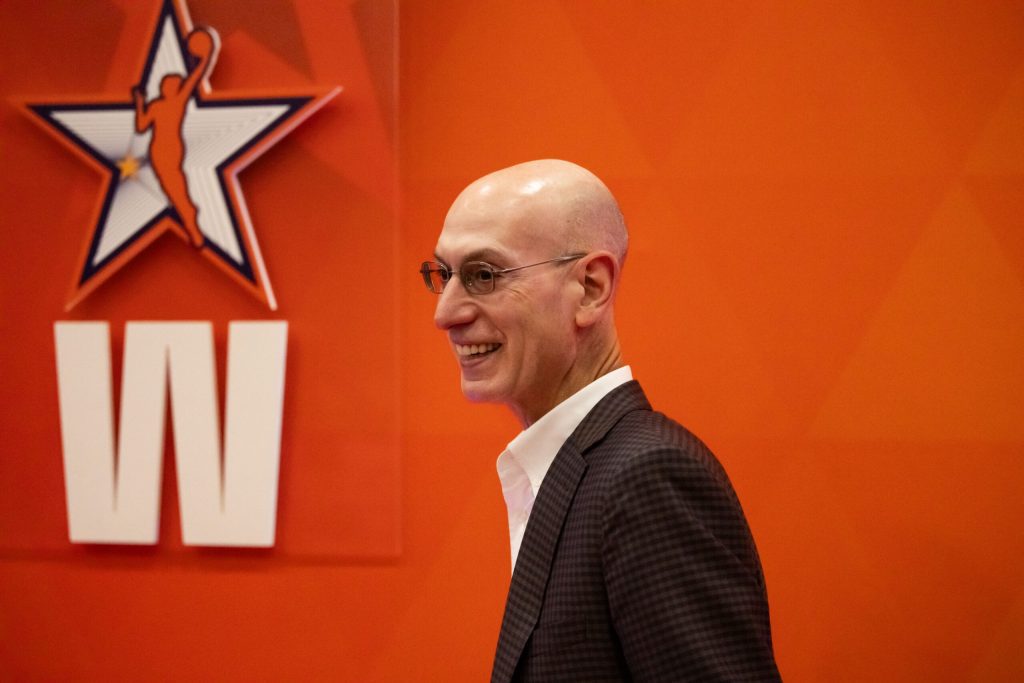Revenue Sharing Tensions Continue
The ongoing conflict between the league and its players has once again been centered around revenue sharing. Let’s break down the recent disagreements and their implications for future negotiations.
Silver on Revenue Sharing
On October 21, during an interview on NBC’s “The Today Show,” NBA Commissioner Adam Silver addressed the upcoming 2025-26 NBA season. Host Craig Melvin questioned Silver about whether players should receive a larger share of revenue in the next collective bargaining agreement (CBA), referencing the frequently mentioned 9% figure.
Silver initially responded with a direct “yes,” echoing the goals of the WNBPA. However, his follow-up remarks raised concerns among union officials. He argued that focusing solely on revenue share isn’t the right approach, given the NBA’s overall revenue growth. When Melvin pressed for an alternative view, Silver suggested evaluating “absolute numbers” instead, which implied that while player salaries should increase, the revenue share itself wasn’t the focal point.
Despite both sides agreeing that players deserve raises, there’s friction over the specifics of those increases and the mechanisms for aligning the league’s finances with player compensation. The WNBPA took issue with Silver’s emphasis on absolute amounts over comparative shares.
Concerns Over Contract Structures
The WNBPA has been vocal about the necessity of tying salary caps directly to league revenue. However, recent reports suggest the league remains firm that revenue sharing should operate independently of the salary cap. WNBPA executive director Terri Jackson criticized the league’s framing of revenue sharing, labeling it insufficient. She highlighted concerns over a fixed salary system that doesn’t adequately address player needs.
Jackson’s wording has sparked debate, particularly as the current CBA’s revenue-sharing models have no caps on player earnings tied to revenue above set targets. Yet, the structure risks players missing out on revenue sharing if the financial growth doesn’t meet expectations.
Impacts of Communication Missteps
The choice of language, particularly the reference to “uncapped,” has become a focal point of contention. The league’s response claimed that its revenue sharing model is robust and directly linked to overall league performance. If Jackson had focused her criticisms on the specifics of the league’s proposal rather than suggesting deception, it might have provided a stronger foundation for negotiation.
Where to Go from Here
The situation is reminiscent of previous tensions expressed in earlier negotiations, and as the October 31 deadline for the CBA approaches, the urgency is palpable. Despite possibilities for deadline extensions, the divide between the parties is widening, fueled by mistrust. WNBPA president Nneka Ogwumike recently voiced concerns over the league’s transparency regarding financial transparency, while the league insisted it maintains open communication about financial records.
Importantly, while the negotiations are fraught with challenges, they stem from an underlying increase in revenue, presenting opportunities for positive outcomes on both sides. Potential pathways could involve compromises, where players might accept lower initial salaries for increased revenue shares in the long term. Conversely, owners could adjust salary cap figures to accommodate players’ concerns.
With greater revenue at stake, there are numerous avenues for adjustments within negotiations. However, achieving a mutually beneficial agreement remains complex amidst escalating stakes.



